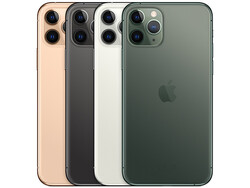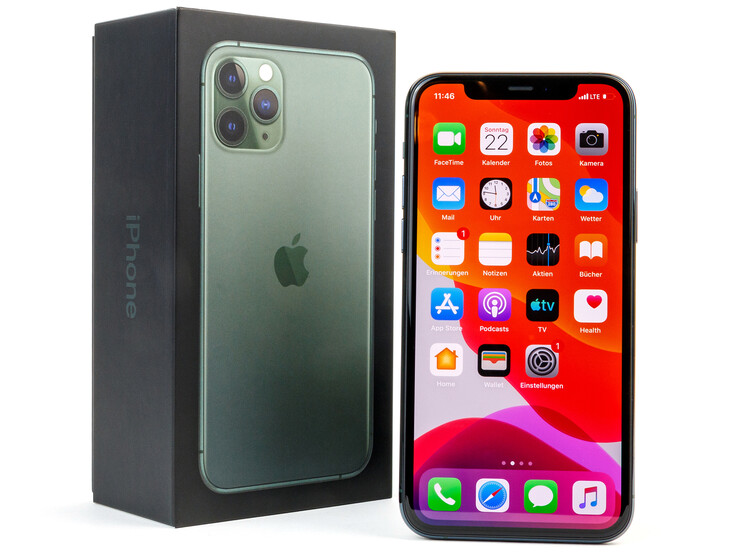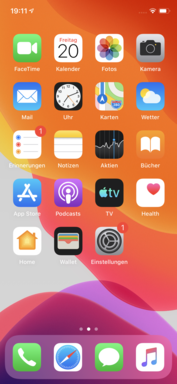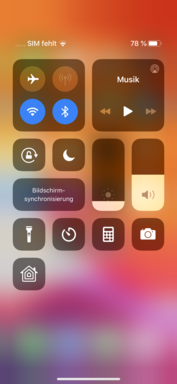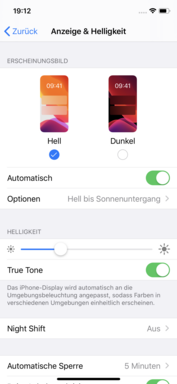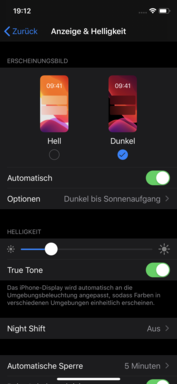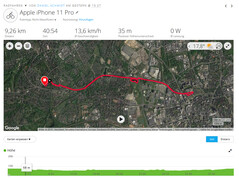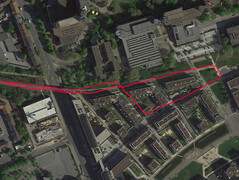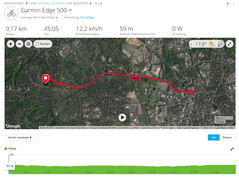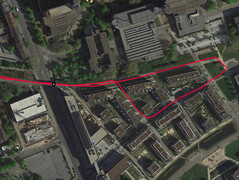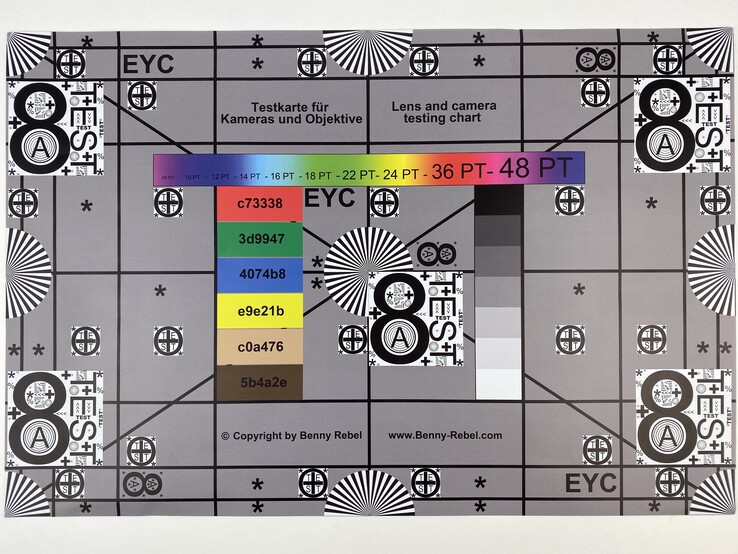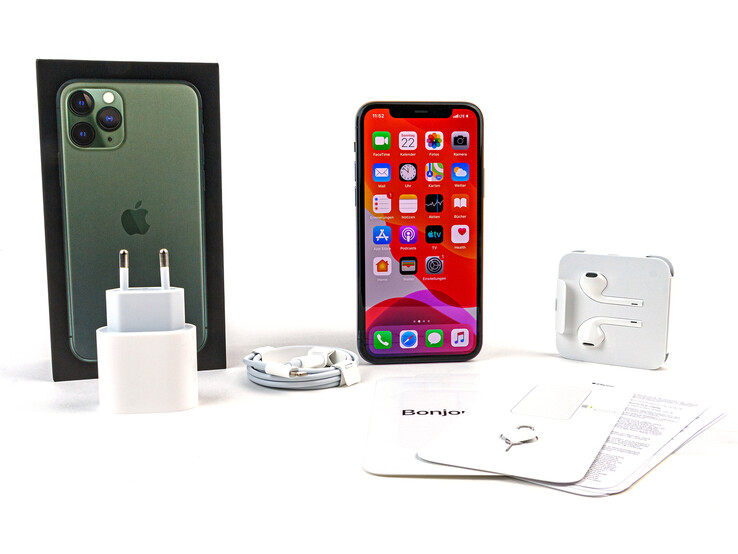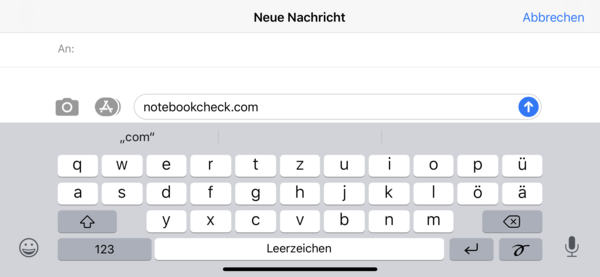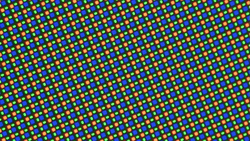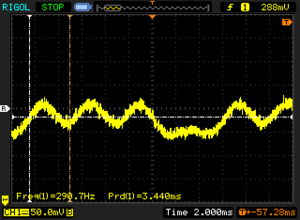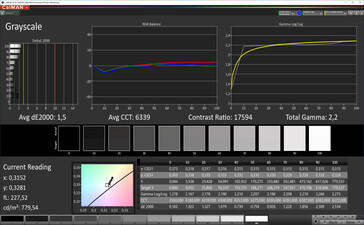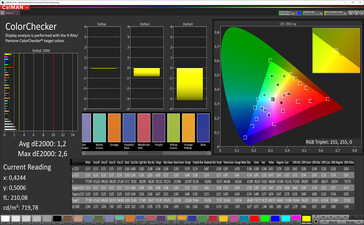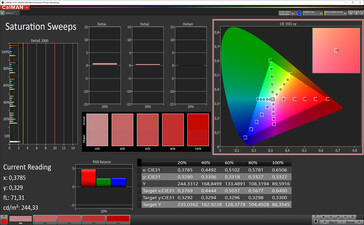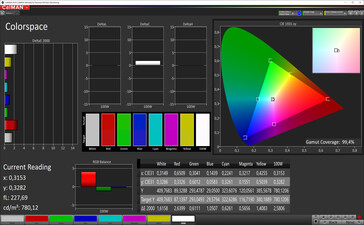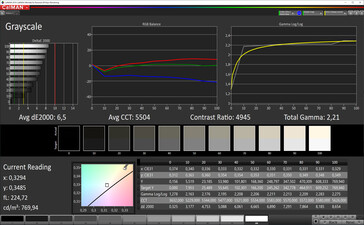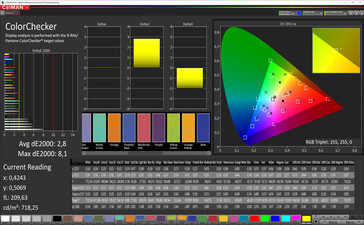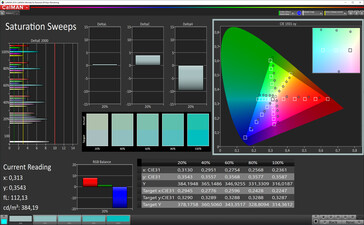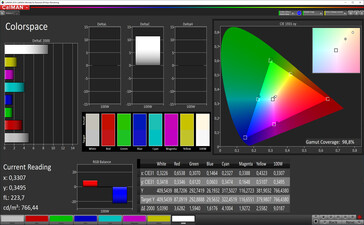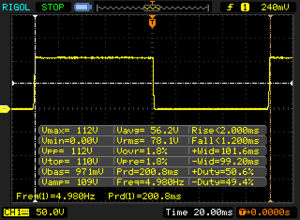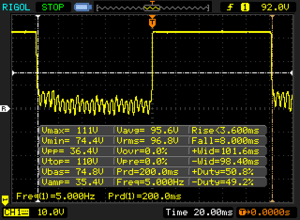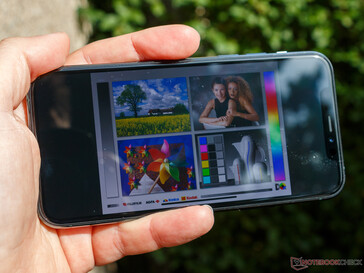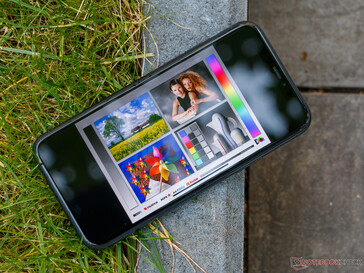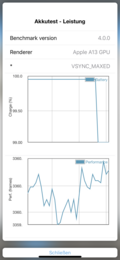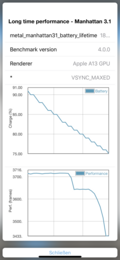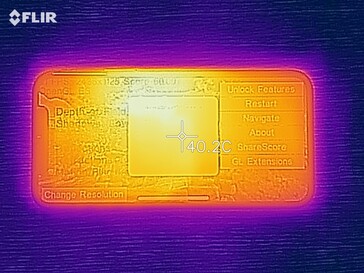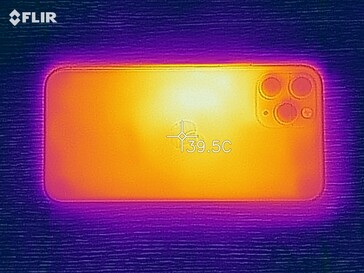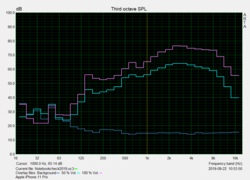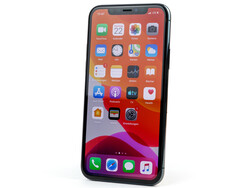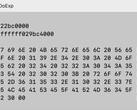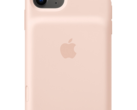Apple iPhone 11 Pro Smartphone Review: Triple rear-facing cameras and more power than you could shake a stick at
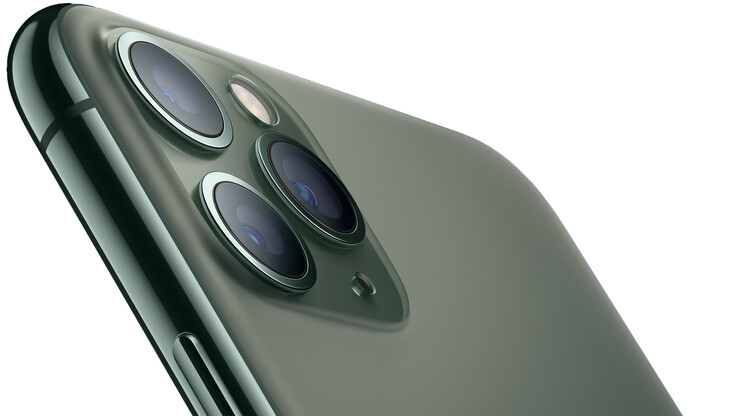
The iPhone 11 Pro succeeds the iPhone XS, the latter of which has now been withdrawn from sale. We will, of course, discuss what Apple has done to make the iPhone 11 Pro worthy of its "Pro" title. On the face of it, the iPhone 11 Pro represents a fine-tuned iPhone XS, without bringing any major innovations to the party.
The iPhone 11 Pro not only has a 5.8-inch OLED panel like its predecessor it also operates at the same resolution. Apple promises that it has equipped the device with a brighter panel though, which is also more colour accurate. The iPhone 11 Pro comes with an A13 Bionic SoC too that Apple complements with 4 GB of RAM. Apple continues to offer 64, 256 and 512 GB variants, which cost US$999, US$1,149 and US$1,349, respectively.
We shall compare the iPhone 11 Pro not only against its predecessor but also against several other flagship smartphones. Our comparison devices will include, but not exclusively, the LG G8s ThinQ, Huawei P30 Pro, OnePlus 7 Pro and the Samsung Galaxy S10+.
- 09.30.2019: Live Review completed.
- 09.27.2019: Communication & GPS, Input Devices & Operation and Emissions sections added.
- 09.26.2019: Update: Display section completed, Performance section expanded, Communication & GPS, Telephone Features & Gaming sections added, initial battery tests added.
- 09.23.2019: Display measurements and additional photos added.
- 09.22.2019: Initial benchmarks and photos added.
- 09.20.2019: Live review started.
Case - A matte glass iPhone
The iPhone 11 Pro has grown a bit in all directions, but the difference between it and the iPhone XS is difficult to see even with the two devices next to each other. The additional 11 grams is noticeable, though. The iPhone 11 Pro is a mix of stainless steel and glass like its predecessors, but Apple has given the latter a matte finish that reminds us a little of frosted glass. The new rear-facing camera housing almost immediately caught our eye too.
Our review unit is built excellently and gives us no cause for criticism. The gaps between materials are even and tight, while we cannot twist or deform the device no matter how hard we try to do so. Apple promises that the iPhone 11 Pro is more drop resistant than its predecessor too, although it has not stated the type of glass it uses, except that it strengthens each pane by ionising it multiple times. While the matte back will pick up fewer fingerprints than the glossy back of the iPhone 11 will, its polished stainless steel frame will quickly pick up fingerprint grease.
Apple currently sells the iPhone 11 Pro in Gold, Space Gray, Silver, and a new Midnight Green colour. While the company sells a conventional dual-SIM variant in China, all other regions will come with one nano-SIM card slot and an eSIM built onto the motherboard. The iPhone 11 Pro is IP68-certified against dust and liquids like its predecessor, but Apple claims the device can survive being submerged in up to four metres of water for 30 minutes.
Connectivity - iPhone Pro, but no USB Type-C
The iPhone 11 Pro has a Lightning port like its predecessor and many generations of iPhone before it. While Apple persists with using proprietary ports for its iPhones, it has included a USB Type-C to Lightning cable in the box, a move away from the Type-A to Lightning cable it bundled with previous iPhones and the iPhone 11.
The iPhone 11 Pro supports Bluetooth 5.0 too and has an NFC chip on board, although Apple still restricts the latter to read mode, effectively limiting it to only a few uses including Apple Pay. The company has included a new ultra-wideband chip too, abbreviated to the Apple U1, which gives the iPhone 11 Pro spatial awareness of sorts. The device can sense nearby smartphones equipped with this chip and communicate with them, which in practical terms currently just simplifies AirDrop. More applications should integrate this functionality over time too.
Face ID returns too, as does eSIM functionality. Effectively, the iPhone 11 Pro is a dual SIM smartphone.
Software - iOS 13, a speedier and darker upgrade
The iPhone 11 ships with iOS 13, just like its more expensive siblings. Apple will bring the software update to every iPhone back to the iPhone SE and iPhone 6S too. The focus of iOS 13 is performance improvements, with Apple reducing the file sizes of its preinstalled apps, among other things, to make the OS feel snappier than iOS 12. iOS 13 includes Face ID improvements too, which Apple promises should allow all compatible devices to be unlocked up to 30% faster than in iOS 12.
The most striking new feature of iOS 13 is undoubtedly the dark mode, which should help relieve tired eyes at night. Apple has done more than replace white areas with black ones though, as iOS 13 darkens the display slightly and reduces the colour intensity of the display at night too. You can toggle this feature manually or set it to run between specific periods of the day. You can even set it to turn on at sunset and turn off at sunrise.
iOS 13 does away with the Friends app, with Apple merging its functionality within the rebranded iPhone search, which it now calls "Where is?" The update introduces several other changes too, which we shall cover in our iPhone 11 Pro series reviews.
Communication & GPS - Modern Wi-Fi 6, but no 5G
The iPhone 11 Pro supports the new Wi-Fi 6 standard like its iPhone 11 siblings, which you may see referred to elsewhere as IEEE 802.11ax. The device can connect to either 2.4 or 5.0 GHz Wi-Fi networks and achieved decent transfer speeds with our Linksys EA8500 reference router, although these are far below the theoretical capabilities of the Wi-Fi 6 modem in the iPhone 11 Pro. However, the bottleneck lies with our reference router, which supports neither Wi-Fi 6 nor the high transfer speeds of which Wi-Fi 6 devices are capable. We experienced some small reception issues during our tests though, but only when connected to busy Wi-Fi networks where the iPhone reported about half signal strength. In this limited case, our review unit would load the App Store slowly or would report there being no internet connection available. We also had to reduce the packet size for our Wi-Fi tests in this instance, as otherwise the iPhone would inexplicably reset the test. We suspect that Apple will rectify this blemish with a software update.
Apple is rather cryptic about the LTE modem with which it has equipped the iPhone 11 Pro. We suspect that the company has chosen the Intel XMM 7660, having used the Intel XMM 7560 for the iPhone XS, but we have had no confirmation on this. Instead, Apple claims that the iPhone 11 Pro has a Gigabit-class LTE modem, which theoretically supports up to 1.6 Gb/s downloads and 150 Mb/s uploads using LTE Cat.19. iFixit has confirmed that Apple has equipped the iPhone 11 Pro with an upgraded modem, which carries the model number Intel X927YD2Q. By contrast, the iPhone XS has an Intel PMB9955, better known as the Intel XMM 7560. Correspondingly, the iPhone 11 Pro maintained slightly better LTE reception during our tests than its predecessor and supports three additional LTE bands too. It is a shame to see no 5G modem or a 5G model this year, though.
Addendum: iOS 13.1 rectifies the issues that we had originally experienced with our review unit.
The iPhone 11 Pro utilises GPS including A-GPS, Glonass, Galileo and QZSS for location services, but not BeiDou. Our review unit finds a satellite fix quickly indoors, but it did so even faster when we took it outside.
We also took the iPhone 11 Pro on a bike ride to compare its location accuracy against the Garmin Edge 500, our reference bike computer. The two devices had deviated from each other by about 90 metres by the end of our bike ride, with the iPhone occasionally lacking the accuracy of the Garmin. The former showed no major weaknesses here though and is accurate enough for all general navigation tasks.
Telephone Features & Call Quality
Our review unit has excellent call quality. We experienced no issues with the earpiece during our call tests, but we did notice a slight echo when using the loudspeaker. The person to whom we were speaking also complained that our voice sounded a bit tinny when using the loudspeaker, and that our voice sounded overly quiet if we moved away from being right next to the phone.
The iPhone 11 Pro supports voice over LTE (VoLTE) and Wi-Fi calls (VoWiFi), but your carrier must provision the device on its network before the technologies will work. Apple has included an eSIM too, which will only work with compatible contracts. However, it worked perfectly during our tests and gives the device dual-SIM functionality.
Cameras - Triple rear-facing cameras with better video capabilities
Apple has equipped the iPhone 11 Pro with a 12 MP front-facing camera, which improves upon the bokeh and depth of field controls that the iPhone XS can utilise. Accordingly, another effect is added in portrait mode, the so-called high-key mono. The manufacturer has also added a new feature in portrait mode, which it calls High-Key mono. The default camera app also supports Smart HDR, Retina flash and electronic image stabilisation. You can even record videos in up to Ultra HD at 60 FPS with the front-facing camera too.
The iPhone 11 Pro also has triple rear-facing cameras, just like the iPhone 11 Pro Max. All are 12 MP sensors, the main of which has an f/1.8 aperture, a 1/2.55-inch sensor size and is optically stabilised (OIS). By contrast, the new ultra-wide-angle sensor has a narrower f/2.4 aperture and does not support OIS, but it does have a 120° field of view. The final sensor is a telephoto lens that not only supports OIS and has an f/2.0 aperture but also 2x optical zoom. Apple has improved its Smart HDR algorithm too, which delivers sharper-looking pictures, and it has finally integrated a dedicated night mode within its camera app. The mode only becomes active in pre-determined lighting conditions though, so you will not always be able to see it. The mode icon appears in the top left of the camera app when you can use it. The night mode recommends an extended exposure time too, but you can adjust this manually to up to five seconds, should you wish to do so.
Apple has paid special attention to the video capabilities of the iPhone 11 Pro too, which were already mighty impressive in last year's iPhones. The iPhone 11 Pro promises to shoot better low-light video than its predecessors, among other improvements.
Apple has paid attention to improve the videography of its latest iPhones, despite last year's models already being comparatively strong in this regard. The iPhone 11 Pro should perform well in low-light scenarios, but it reaches its limits at 60 FPS and even drops to 24 FPS when set to 30 FPS. However, our review unit takes the most homogenous-looking video of our comparison devices, in our opinion. The P30 Pro exposes low-light scenes as well as the iPhone 11 Pro can, but it struggles with eliminating striking colour artefacts. By contrast, the Samsung Galaxy Fold produces a slightly darker, cooler and noisier-looking video. Incidentally, the iPhone 11 should offer equally as good video performance thanks to its identical main rear-facing camera sensor.
Unsurprisingly, the iPhone 11 Pro delivers excellent videos in daylight too, which look best when shot in UHD at 60 FPS. The standard sensor and telephoto lens can fall back on OIS for image stabilisation, but it is a shame that it is currently impossible to switch between sensors while recording in UHD at 60 FPS. It is only possible to switch to the two sensors at other resolutions, though. However, you can only make use of the six-fold digital zoom when doing this, which is worth keeping in mind. Our review unit captures detailed and rich-sounding audio too.
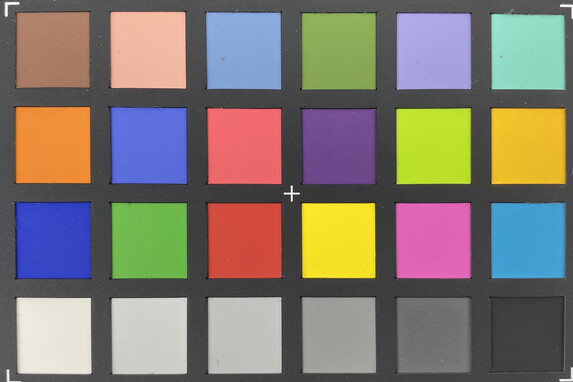
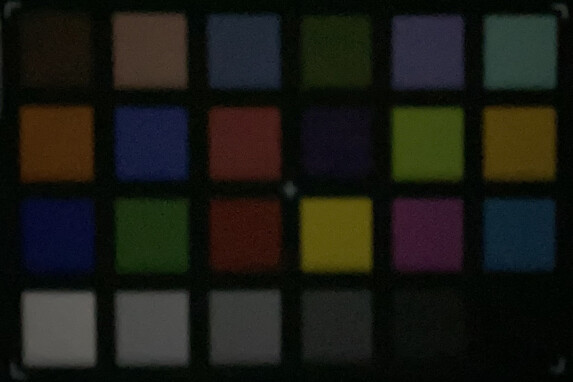
Accessories & Warranty - Still only one-year's warranty
The iPhone 11 Pro comes with a fast charger, a Lightning to USB Type-C cable, a pair of Lightning headphones, a SIM tool, a quick-start guide and a set of stickers. Apple sells numerous covers, cases and third-party wireless chargers separately too.
The iPhone 11 Pro comes with a one-year limited manufacturer's warranty. However, you may receive up to two years' coverage if you live in the EU, for example. Please see our Guarantees, Return Policies & Warranties FAQ for country-specific information.
Apple continues to offer its AppleCare+ service too, which still costs €229 and covers two accidental damage repairs. Even with AppleCare+, Apple charges a €29 service fee for a display replacement and €99 to repair any other damage to the device. In theory, the latter should also cover a total loss of the device too. AppleCare+ is valid for two years from the date of purchase and can be purchased up to 60 days after purchase.
Input Devices & Operation - Apple improves Face ID
The capacitive touchscreen with which Apple has equipped the iPhone 11 Pro is the same as the one that it used in the iPhone XS. This is no bad thing though, as it reproduces inputs reliably quickly and accurately onscreen. The volume and power buttons have not changed much since the iPhone X, apart from them now being a little thicker than they were previously. We have no issues with these, either.
Apple has finally brought swiping to its preinstalled keyboard, but you can still switch to alternate keyboards found on the App Store should you prefer. Apple no longer offers 3D Touch on any of its current iPhones, having replaced the pressure-sensitive technology with Haptic Touch. In practice little separates the two technologies, but 3D Touch required dedicated hardware, whereas Haptic Touch is merely a software-level solution. Effectively, Apple has replaced pressure-sensitive touches with long ones to bring up submenus.
Face ID returns too, and with increased recognition speeds according to Apple. The G8S ThinQ continues to have the fastest 3D facial recognition of any device that we have tested, though. Face ID now has a wider field of view too, which proved a practical upgrade in everyday use.
Display - An improved OLED panel
Apple has equipped the iPhone 11 Pro with a 5.8-inch OLED panel, which it continues to market as Super Retina XDR. The display resolves to 2436x1125, which yields a pixel density of 463 PPI. Above all, Apple promises to have equipped the iPhone 11 Pro with a brighter panel than it used in the iPhone XS, which should reach 800 cd/m² in general use and even up to 1,200 cd/m² when displaying HDR content. Apple's True Tone functionality returns too, which automatically adjusts the white balance of the display according to the ambient light in which it is situated.
Our review unit gets impressively bright, considering that it has an OLED panel. The display achieved an average maximum luminosity of 793 cd/m² according to X-Rite i1Pro 2, which puts it close to the 800 cd/m² of which Apple claims the display is capable. Our review unit does achieve this threshold, but only at one point of the display. Conversely, the more practical APL tests have the display peaking at even higher values. APL50, for instance, judged the display as averaging 844 cd/m², while APL10 recorded an even better value of 861 cd/m². We could not find a way to replicate Apple's 1,200 cd/m² claim with HDR enabled, but we suspect this brightness boost will only be available to custom apps. Unusually, Apple also allows the display to reach peak luminosity manually, rather than only with the brightness sensor enabled as is the case with many modern smartphones.
OLED panels can switch off pixels individually, so blacks are represented by deactivated pixels, rather than by dimming the screen as LCDs do. Hence, the OLED panel in the iPhone 11 Pro theoretically displays absolute blacks and an infinitely high contrast ratio. As expected, the iPhone 11 Pro uses pulse width modulation (PWM) to control display brightness. The panel in our review unit flickers at between 60 and 290.7 Hz, which is rather unusual. By contrast, most OLED panels flicker at one frequency.
| |||||||||||||||||||||||||
Brightness Distribution: 98 %
Center on Battery: 787 cd/m²
Contrast: ∞:1 (Black: 0 cd/m²)
ΔE ColorChecker Calman: 1.2 | ∀{0.5-29.43 Ø4.77}
ΔE Greyscale Calman: 1.5 | ∀{0.09-98 Ø5}
99.4% sRGB (Calman 2D)
Gamma: 2.2
CCT: 6339 K
| Apple iPhone 11 Pro OLED, 2436x1125, 5.8" | Apple iPhone XS OLED, 2436x1125, 5.8" | Samsung Galaxy S10 Plus OLED, 3040x1440, 6.4" | Huawei P30 Pro OLED, 2340x1080, 6.5" | OnePlus 7 Pro AMOLED, 3120x1440, 6.7" | LG G8s ThinQ P-OLED, 2248x1080, 6.2" | |
|---|---|---|---|---|---|---|
| Screen | -10% | -87% | -31% | -13% | -84% | |
| Brightness middle (cd/m²) | 787 | 639 -19% | 710 -10% | 597 -24% | 586 -26% | 539 -32% |
| Brightness (cd/m²) | 793 | 637 -20% | 721 -9% | 608 -23% | 584 -26% | 556 -30% |
| Brightness Distribution (%) | 98 | 94 -4% | 97 -1% | 89 -9% | 97 -1% | 88 -10% |
| Black Level * (cd/m²) | ||||||
| Colorchecker dE 2000 * | 1.2 | 1 17% | 3.7 -208% | 2.2 -83% | 1.39 -16% | 3.78 -215% |
| Colorchecker dE 2000 max. * | 2.6 | 2.2 15% | 10.3 -296% | 3.6 -38% | 2.7 -4% | 6.95 -167% |
| Greyscale dE 2000 * | 1.5 | 2.2 -47% | 1.5 -0% | 1.6 -7% | 1.6 -7% | 2.2 -47% |
| Gamma | 2.2 100% | 1.9 116% | 2.1 105% | 2.23 99% | 2.243 98% | 2.274 97% |
| CCT | 6339 103% | 6364 102% | 6611 98% | 6268 104% | 6672 97% | 6013 108% |
* ... smaller is better
Screen Flickering / PWM (Pulse-Width Modulation)
| Screen flickering / PWM detected | 290.7 Hz | ≤ 99 % brightness setting | |
The display backlight flickers at 290.7 Hz (worst case, e.g., utilizing PWM) Flickering detected at a brightness setting of 99 % and below. There should be no flickering or PWM above this brightness setting. The frequency of 290.7 Hz is relatively high, so most users sensitive to PWM should not notice any flickering. However, there are reports that some users are still sensitive to PWM at 500 Hz and above, so be aware. In comparison: 53 % of all tested devices do not use PWM to dim the display. If PWM was detected, an average of 8081 (minimum: 5 - maximum: 343500) Hz was measured. | |||
We also analysed the display using a photo spectrometer and CalMAN software, screenshots of which we have provided below. The iPhone 11 Pro, like its predecessors, cannot fully cover the DCI-P3 colour space, so we moved to the narrower sRGB colour space for further tests. Deactivating True Tone results in hardly any colour deviations from the sRGB colour space, although the white point is slightly warmer than ideal values. Activating True Tone will result in a warmer-looking image, but without any colour distortion.
Display Response Times
| ↔ Response Time Black to White | ||
|---|---|---|
| 3.2 ms ... rise ↗ and fall ↘ combined | ↗ 2 ms rise | |
| ↘ 1.2 ms fall | ||
| The screen shows very fast response rates in our tests and should be very well suited for fast-paced gaming. In comparison, all tested devices range from 0.1 (minimum) to 240 (maximum) ms. » 14 % of all devices are better. This means that the measured response time is better than the average of all tested devices (20.2 ms). | ||
| ↔ Response Time 50% Grey to 80% Grey | ||
| 11.6 ms ... rise ↗ and fall ↘ combined | ↗ 3.6 ms rise | |
| ↘ 8 ms fall | ||
| The screen shows good response rates in our tests, but may be too slow for competitive gamers. In comparison, all tested devices range from 0.165 (minimum) to 636 (maximum) ms. » 24 % of all devices are better. This means that the measured response time is better than the average of all tested devices (31.6 ms). | ||
Unsurprisingly, the iPhone 11 Pro is easy to use outdoors thanks to its bright and contrast-rich display. The glass is not that reflective either, so you should have no issues with reading the display in bright sunlight. Additionally, the ambient light sensor quickly changes the screen brightness, so you should never be left waiting for the display to brighten when you step outside. We cannot confirm so far whether the device dims the display if it gets hot, but we shall keep this in mind during our tests.
Performance - The Apple A13 Bionic blows away the competition
The iPhone 11 Pro comes with an A13 Bionic SoC, just like every other device in the iPhone 11 series does. The hexa-core SoC features two performance cores and four power-saving cores, which Apple complements with 4 GB of RAM. The SoC also integrates an A13 Bionic GPU and has 8.5 billion transistors on a 7 nm EUV process that TSMC manufactures.
As expected, the A13 Bionic delivers excellent performance and excelled in synthetic benchmarks. The system occasionally downclocks the SoC to prevent overheating though, which results in fluctuating benchmark scores. Our review unit always ran smoothly and loaded apps quickly too.
Similarly, the iPhone 11 Pro dominates in browser benchmark using the preinstalled Safari browser. Incidentally, iOS 13 introduces the option of downloading any file type and storing it on the device, which is a nice but long overdue change.
| Jetstream 2 - 2.0 Total Score | |
| Average of class Smartphone (23.8 - 387, n=147, last 2 years) | |
| Average Apple A13 Bionic (128.5 - 142.2, n=5) | |
| Apple iPhone 11 (Safari Mobile 13.0) | |
| Apple iPhone 11 Pro Max (Safari Mobile 13.1) | |
| Apple iPhone 11 Pro (Safari Mobile 13.0) | |
| Apple iPhone XS | |
| OnePlus 7 Pro (Chrome 74) | |
| Huawei P30 Pro (Chrome 73) | |
| Asus ZenFone 6 ZS630KL (Chrome 75) | |
| LG G8s ThinQ (Chrome 75) | |
| Samsung Galaxy S10 Plus (Samung Browser 9.0) | |
| JetStream 1.1 - Total Score | |
| Apple iPhone 11 Pro Max (Safari Mobile 13.1) | |
| Apple iPhone 11 Pro (Safari Mobile 13.0) | |
| Apple iPhone 11 (Safari Mobile 13.0) | |
| Average Apple A13 Bionic (279 - 302, n=5) | |
| Apple iPad Pro 11 2018 (Safari 13) | |
| Apple iPhone XS (Safari Mobile 12.0) | |
| Asus ZenFone 6 ZS630KL (Chrome 75) | |
| LG G8s ThinQ (Chrome 75) | |
| Samsung Galaxy S10 Plus (Samsung Browser 9.0) | |
| Speedometer 2.0 - Result 2.0 | |
| Average of class Smartphone (15.2 - 643, n=119, last 2 years) | |
| Average Apple A13 Bionic (153 - 171, n=5) | |
| Apple iPhone 11 (Safari Mobile 13.0) | |
| Apple iPhone 11 Pro Max (Safari Mobile 13.1) | |
| Apple iPhone 11 Pro (Safari Mobile 13.0) | |
| Apple iPad Pro 11 2018 (IOS 12.1.1) | |
| Apple iPhone XS (Safari Mobile 12) | |
| Huawei P30 Pro (Chrome 73) | |
| Asus ZenFone 6 ZS630KL (Chrome 75) | |
| LG G8s ThinQ (Chome 75) | |
| OnePlus 7 Pro (Chome 74) | |
| Samsung Galaxy S10 Plus (Samsung Browser 9.0) | |
| WebXPRT 3 - Overall | |
| Apple iPhone 11 (Safari Mobile 13.0) | |
| Apple iPhone 11 Pro (Safari Mobile 13.0) | |
| Apple iPhone 11 Pro Max (Safari Mobile 13.1) | |
| Average Apple A13 Bionic (146 - 202, n=5) | |
| Average of class Smartphone (38 - 380, n=30, last 2 years) | |
| Apple iPad Pro 11 2018 (Safari 13) | |
| Apple iPhone XS (Safari Mobile 12.0) | |
| Huawei P30 Pro (Chrome 73) | |
| Samsung Galaxy S10 Plus (Samsung Browser 9.0) | |
| OnePlus 7 Pro (Chrome 74) | |
| Asus ZenFone 6 ZS630KL (Chrome 75) | |
| LG G8s ThinQ (Chrome 75) | |
| Octane V2 - Total Score | |
| Average of class Smartphone (2228 - 126661, n=194, last 2 years) | |
| Apple iPhone 11 Pro Max (Safari Mobile 13.1) | |
| Apple iPhone 11 Pro (Safari Mobile 13.0) | |
| Apple iPhone 11 (Safari Mobile 13.0) | |
| Average Apple A13 Bionic (47288 - 49388, n=5) | |
| Apple iPad Pro 11 2018 (Safari 13) | |
| Apple iPhone XS (Safari Mobile 12.0) | |
| OnePlus 7 Pro (Chrome 74) | |
| Asus ZenFone 6 ZS630KL (Chrome 75) | |
| LG G8s ThinQ (Chrome 75) | |
| Huawei P30 Pro (Chrome 73) | |
| Samsung Galaxy S10 Plus (Samsung Browser 9.0) | |
| Mozilla Kraken 1.1 - Total | |
| LG G8s ThinQ (Chrome 75) | |
| Asus ZenFone 6 ZS630KL (Chrome 75) | |
| Huawei P30 Pro (Chrome 73) | |
| OnePlus 7 Pro (Chrome 74) | |
| Samsung Galaxy S10 Plus (Samsung Browser 9.0) | |
| Average of class Smartphone (257 - 28190, n=154, last 2 years) | |
| Apple iPhone XS (Safari Mobile 12.0) | |
| Apple iPad Pro 11 2018 (Safari 13) | |
| Apple iPhone 11 (Safari Mobile 13.0) | |
| Apple iPhone 11 Pro (Safari Mobile 13.0) | |
| Apple iPhone 11 Pro Max (Safari Mobile 13.1) | |
| Average Apple A13 Bionic (545 - 573, n=5) | |
* ... smaller is better
Games - High FPS but with a small caveat
Theoretically, the iPhone 11 Pro should be an ideal gaming smartphone not least because of its powerful hardware. Our review unit fits well in our hands, is not too heavy, has a fast touchscreen and it has punchy-sounding speakers.
Likewise, our review unit maintained stable and high frame rates during our tests, as demonstrated by the GameBench tables below. However, we noticed some minor graphics glitches when playing PUBG Mobile, just as we originally did when testing the iPhone XS. This problem was eventually patched, which we suspect will be the case with the iPhone 11 Pro too.
PUBG Mobile
Battle Bay
Asphalt 9: Legends
Emissions - High temperatures and weak audio features
Temperature
The iPhone 11 Pro runs rather hot even when idling and gets even hotter under continuous load. However, our review unit never reached critical levels, so it should still be safe to put in your pocket after a prolonged gaming session.
We also ran GFXBench battery tests on a loop to see how the A13 Bionic performed under sustained load. While the iPhone 11 Pro had no issues when running the older T-Rex benchmark, it throttles by around 8% in the more demanding Manhattan test. It only does so relatively late on into the loop though, so this should not be an issue in daily use.
(+) The maximum temperature on the upper side is 38.8 °C / 102 F, compared to the average of 35.2 °C / 95 F, ranging from 21.9 to 247 °C for the class Smartphone.
(±) The bottom heats up to a maximum of 42.2 °C / 108 F, compared to the average of 34 °C / 93 F
(±) In idle usage, the average temperature for the upper side is 33.4 °C / 92 F, compared to the device average of 32.9 °C / 91 F.
Speakers
Apple equips the iPhone 11 Pro with stereo speakers, which proved something of a disappointment during our tests. While they sound decent, the ones in our review unit start to distort at high volumes, which only gets worse at maximum volume. Apple has equipped previous iPhones with much better speakers than the ones it has included in the iPhone 11 Pro, which is a shame. Our measurements confirm our subjective impressions too.
Hence, we would recommend using external audio equipment where possible. The included headphones are solid companions at best, but they will not blow anyone away. Sadly, Apple continues to fail to include a Lightning to headphone jack adapter in the box.
You can always use Bluetooth audio equipment instead, with the iPhone 11 Pro supporting the modern 5.0 standard. However, its audio codec support is rather thin, as Apple only includes AAC by way of high-resolution codecs. While this is good enough for streaming music from Apple Music, AAC cannot output as much data as codecs like aptX HD or LDAC can.
Apple iPhone 11 Pro audio analysis
(+) | speakers can play relatively loud (85 dB)
Bass 100 - 315 Hz
(-) | nearly no bass - on average 15.9% lower than median
(±) | linearity of bass is average (11% delta to prev. frequency)
Mids 400 - 2000 Hz
(+) | balanced mids - only 4.8% away from median
(±) | linearity of mids is average (7% delta to prev. frequency)
Highs 2 - 16 kHz
(±) | higher highs - on average 9.3% higher than median
(+) | highs are linear (2.9% delta to prev. frequency)
Overall 100 - 16.000 Hz
(±) | linearity of overall sound is average (19.1% difference to median)
Compared to same class
» 24% of all tested devices in this class were better, 9% similar, 67% worse
» The best had a delta of 11%, average was 35%, worst was 134%
Compared to all devices tested
» 45% of all tested devices were better, 7% similar, 48% worse
» The best had a delta of 4%, average was 24%, worst was 134%
Samsung Galaxy S10 Plus audio analysis
(+) | speakers can play relatively loud (87.8 dB)
Bass 100 - 315 Hz
(-) | nearly no bass - on average 24.6% lower than median
(±) | linearity of bass is average (13.9% delta to prev. frequency)
Mids 400 - 2000 Hz
(+) | balanced mids - only 3.7% away from median
(+) | mids are linear (3% delta to prev. frequency)
Highs 2 - 16 kHz
(+) | balanced highs - only 4.8% away from median
(+) | highs are linear (2.8% delta to prev. frequency)
Overall 100 - 16.000 Hz
(±) | linearity of overall sound is average (16.9% difference to median)
Compared to same class
» 9% of all tested devices in this class were better, 7% similar, 84% worse
» The best had a delta of 11%, average was 35%, worst was 134%
Compared to all devices tested
» 29% of all tested devices were better, 8% similar, 63% worse
» The best had a delta of 4%, average was 24%, worst was 134%
Power Management - A larger battery and excellent runtimes
Power Consumption
The iPhone 11 Pro has comparatively good power consumption, even if it sips a bit too much when idling at maximum brightness. Our review unit consumes more than its predecessor in this regard, but only because it can reach full luminosity in manual mode, which the iPhone XS cannot.
The included 18 W quick charger can recharge the iPhone 11 Pro fully in around 100 minutes, so you need not spend too long tethered to an outlet. The iPhone 11 Pro supports wireless charging too.
| Off / Standby | |
| Idle | |
| Load |
|
Key:
min: | |
| Apple iPhone 11 Pro 3046 mAh | Apple iPhone XS 2658 mAh | Samsung Galaxy S10 Plus 4100 mAh | Huawei P30 Pro 4200 mAh | OnePlus 7 Pro 4000 mAh | LG G8s ThinQ 3550 mAh | Average Apple A13 Bionic | Average of class Smartphone | |
|---|---|---|---|---|---|---|---|---|
| Power Consumption | -5% | -33% | -26% | -43% | -46% | -47% | -46% | |
| Idle Minimum * (Watt) | 0.58 | 0.95 -64% | 0.73 -26% | 0.68 -17% | 0.9 -55% | 1.2 -107% | 0.76 ? -31% | 0.847 ? -46% |
| Idle Average * (Watt) | 1.99 | 1.34 33% | 1.53 23% | 2.6 -31% | 1.8 10% | 1.6 20% | 3.39 ? -70% | 1.446 ? 27% |
| Idle Maximum * (Watt) | 2.03 | 1.48 27% | 2.07 -2% | 2.77 -36% | 2.9 -43% | 2 1% | 3.44 ? -69% | 1.63 ? 20% |
| Load Average * (Watt) | 3.13 | 4 -28% | 6.03 -93% | 3.74 -19% | 5.5 -76% | 5 -60% | 4.66 ? -49% | 6.95 ? -122% |
| Load Maximum * (Watt) | 5.43 | 5.13 6% | 9.18 -69% | 6.82 -26% | 8.2 -51% | 10 -84% | 6.42 ? -18% | 11.3 ? -108% |
* ... smaller is better
Battery Life
Apple has equipped the iPhone 11 Pro with a 388-mAh larger battery than its predecessor, which Apple promises will deliver up to four hours more battery life than the iPhone XS can manage. Our tests support this claim, which is impressive.
| Apple iPhone 11 Pro 3046 mAh | Apple iPhone XS 2658 mAh | Samsung Galaxy S10 Plus 4100 mAh | Huawei P30 Pro 4200 mAh | OnePlus 7 Pro 4000 mAh | LG G8s ThinQ 3550 mAh | Asus ZenFone 6 ZS630KL 5000 mAh | |
|---|---|---|---|---|---|---|---|
| Battery runtime | -29% | -30% | 4% | -18% | -25% | 32% | |
| Reader / Idle (h) | 34.7 | 24 -31% | 26 -25% | 32.8 -5% | 29.1 -16% | 28.2 -19% | 35.2 1% |
| H.264 (h) | 17.4 | 12.4 -29% | 15.4 -11% | 19.9 14% | 13.4 -23% | 12.6 -28% | 35.6 105% |
| WiFi v1.3 (h) | 13.2 | 9.5 -28% | 8.1 -39% | 14 6% | 12.8 -3% | 11.6 -12% | 13.4 2% |
| Load (h) | 5.6 | 4.1 -27% | 3.1 -45% | 5.7 2% | 3.9 -30% | 3.4 -39% | 6.8 21% |
Pros
Cons
Verdict - A good upgrade, but also with weaknesses
The iPhone 11 Pro is one of the best smaller smartphones currently on the market, with few OEMs currently offering a 5.8-inch flagship. Apple has equipped the device with a larger battery than its predecessor too, which helps it achieve excellent runtimes.
Apple has made strides with cameras too, having finally released an iPhone with triple rear-facing sensors. These particularly impress with their fantastic video capabilities, although the limited ability to switch between lenses while filming is a shame.
The Apple iPhone 11 Pro scores highly with its great battery life and its improved cameras. However, its underwhelming speakers may put off some people.
One area that Apple has neglected is audio. The speakers in our review unit distort at maximum volume and reverberate too much for our liking, while the lack of truly high-resolution Bluetooth audio codecs baffles us. The lack of a headphone jack adapter stings as well. Overall, we expect more from smartphones at this price range in this regard.
Moreover, the inclusion of a 64 GB model seems at odds with being able to shoot UHD and 60 FPS videos, which will have hefty file sizes. Likewise, the lack of even optional 5G makes the iPhone 11 series feel slightly outdated, even if the new technology is yet to reach maturity. In short, the iPhone 11 Pro is a fantastic flagship, but it has its drawbacks.
Apple iPhone 11 Pro
- 08/31/2022 v7 (old)
Daniel Schmidt


